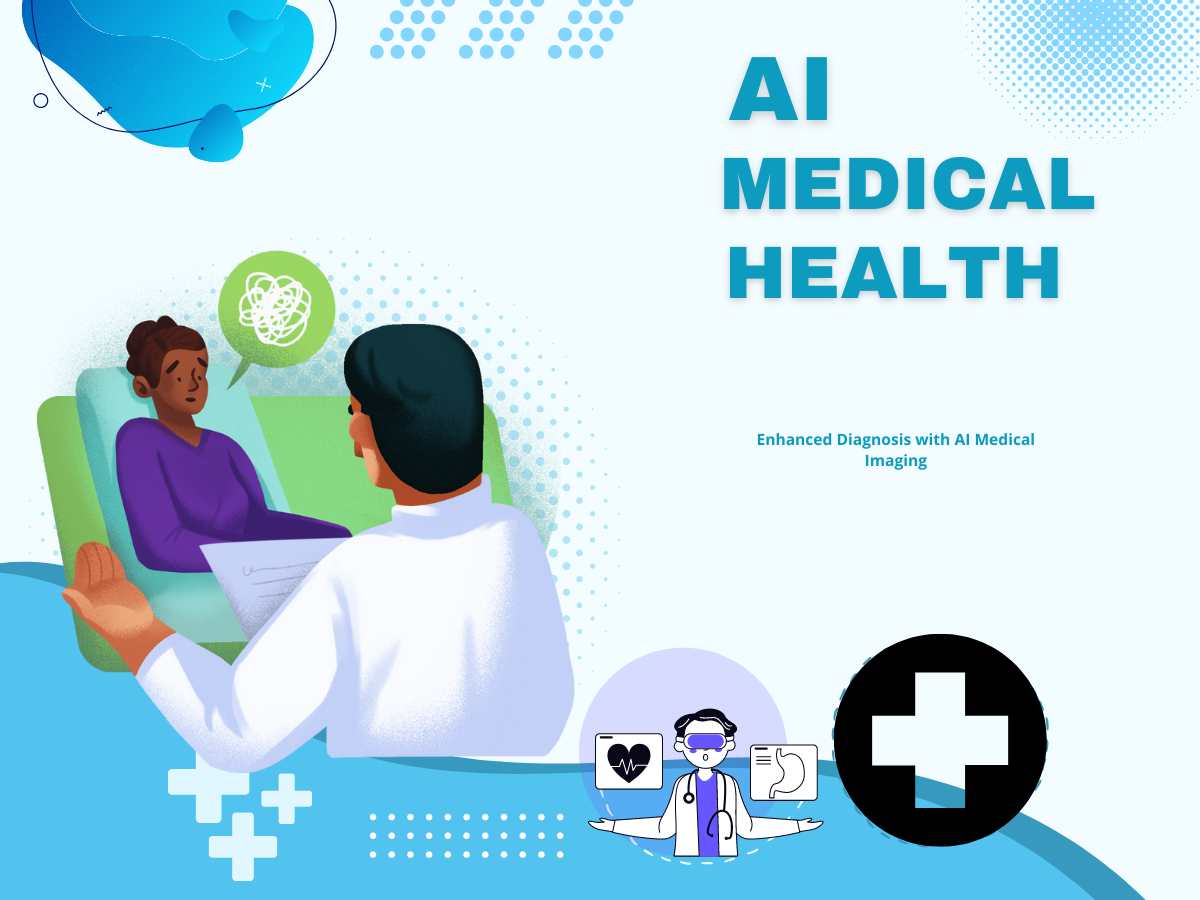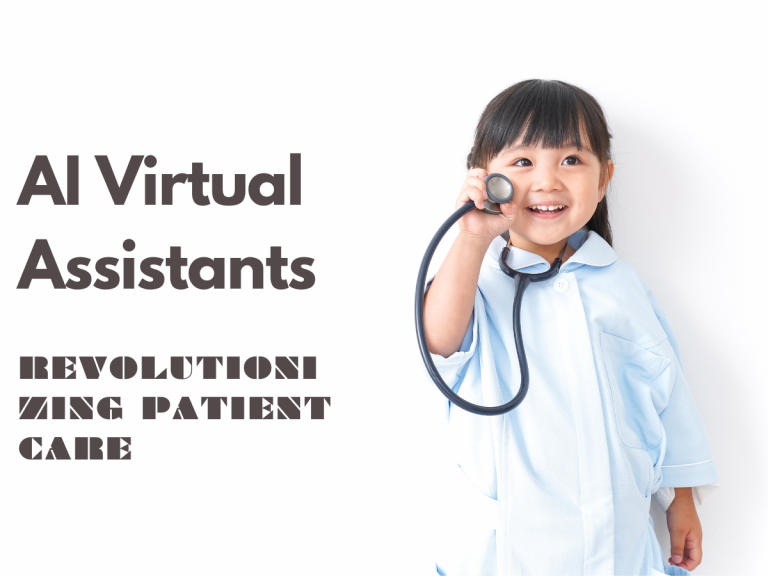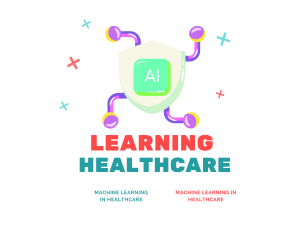1. Introduction:
Medical imaging plays a crucial role in diagnosing various diseases and conditions, allowing healthcare professionals to visualize internal structures and identify abnormalities. Traditional medical imaging techniques, such as X-rays, computed tomography (CT), magnetic resonance imaging (MRI), and ultrasound, have been invaluable tools for diagnosis. However, the interpretation of these images often requires extensive expertise and can be subject to human error.
The integration of AI into medical imaging has the potential to address these limitations by harnessing the power of advanced algorithms and pattern recognition. AI algorithms can analyze vast amounts of medical image data, detect subtle patterns and anomalies, and provide accurate and reliable diagnoses.
2. Benefits of AI Medical Imaging
2.1 Improved Accuracy and Precision
One of the primary advantages of AI medical imaging is its ability to enhance accuracy and precision in diagnosis. AI algorithms can quickly and accurately analyze medical images, detecting even the smallest abnormalities that may be missed by human observers. By leveraging machine learning techniques, AI medical imaging systems continuously improve their performance by learning from a large dataset of annotated medical images.
2.2 Faster Diagnosis and Reduced Waiting Times
With traditional medical imaging, patients often experience long waiting times for their results. AI medical imaging can significantly reduce these waiting times by automating the analysis process. AI algorithms can analyze images in real-time, providing prompt results and enabling healthcare professionals to make faster and more informed decisions. This can be particularly beneficial in emergency situations where timely diagnosis is crucial.
2.3 Early Detection of Diseases
Early detection of diseases is key to successful treatment and improved patient outcomes. AI medical imaging algorithms can identify subtle early signs of diseases, enabling early intervention and more effective treatment strategies. For example, in breast cancer screening, AI algorithms can detect suspicious lesions in mammograms, allowing for timely diagnosis and intervention.
2.4 Personalized Treatment Plans
AI medical imaging can contribute to personalized medicine by providing detailed insights into an individual’s unique condition. By analyzing medical images and patient data, AI algorithms can help tailor treatment plans to specific patients, taking into account their unique characteristics and medical history. This personalized approach can lead to more effective treatments and improved patient outcomes.
3. AI Techniques in Medical Imaging
AI medical imaging utilizes various techniques to analyze and interpret medical images. The following are some of the commonly employed AI techniques in this field:
3.1 Machine Learning
Machine learning is a branch of AI that focuses on developing algorithms that can learn from data and make predictions or decisions without explicit programming. In medical imaging, machine learning algorithms can be trained on large datasets of labeled medical images to recognize patterns and make accurate diagnoses.
3.2 Deep Learning
Deep learning is a subset of machine learning that uses artificial neural networks with multiple layers to analyze and extract complex features from data. Deep learning has shown remarkable success in medical imag tasks, achieving human-level performance in some cases. Convolutional neural networks (CNNs), a type of deep learning architecture, have been particularly effective in image classification and segmentation tasks.
3.3 Convolutional Neural Networks (CNNs)
CNNs are deep learning models specifically designed for analyzing visual data, such as images. These networks consist of multiple layers of interconnected nodes, which learn to extract relevant features from images through a process of convolution and pooling. CNNs have been widely used in medical imag for tasks such as tumor detection, organ segmentation, and disease classification.
3.4 Image Segmentation
Image segmentation is a crucial task in medical imaging, as it involves identifying and delineating specific structures or regions of interest within an image. AI algorithms, particularly deep learning-based approaches, have demonstrated impressive performance in image segmentation tasks. Accurate segmentation can aid in the diagnosis and treatment planning of various medical conditions.
4. AI Applications in Medical Imaging
AI medical imaging has found numerous applications across different medical specialties. Here are some notable examples:
4.1 Radiology
Radiology is one of the primary areas where AI medical imaging has made a significant impact. AI algorithms can assist radiologists in interpreting X-rays, CT scans, and MRI images, improving accuracy and efficiency in diagnosis. AI can help detect lung nodules, identify bone fractures, and differentiate between benign and malignant lesions.
4.2 Oncology
In oncology, AI medical imaging has the potential to revolutionize cancer detection, staging, and treatment planning. AI algorithms can analyze medical images to detect and characterize tumors, assess their growth rate, and predict treatment response. This can aid oncologists in making informed decisions regarding treatment strategies and monitoring disease progression.
4.3 Cardiology
AI medical imaging is also being utilized in cardiology to diagnose and manage cardiovascular conditions. AI algorithms can analyze cardiac images, such as echocardiograms and angiograms, to assess heart function, detect abnormalities, and predict the risk of cardiovascular events. This can assist cardiologists in early detection and intervention, leading to better patient outcomes.
4.4 Neurology
Neurological disorders often require complex and specialized imaging techniques, such as MRI and functional MRI (fMRI). AI medical imaging can aid neurologists in analyzing these images, assisting in the diagnosis and treatment of conditions such as brain tumors, stroke, and neurodegenerative diseases. AI algorithms can detect subtle structural and functional changes in the brain, providing valuable insights for accurate diagnosis.
4.5 Pathology
Pathology involves the examination of tissue samples to diagnose diseases and determine the most appropriate treatment options. AI medical imaging is being applied to digital pathology, where whole-slide images of tissue samples are analyzed using AI algorithms. This automated analysis can assist pathologists in detecting abnormalities, grading tumors, and predicting patient prognosis.
5. Challenges and Limitations
AI medical imaging faces significant challenges and limitations that require addressing and overcoming.
5.1 Data Privacy and Security
AI algorithms require access to vast amounts of medical image data to learn and improve their performance. Ensuring the privacy and security of patient data is paramount to maintain patient trust and comply with regulatory requirements. Strict data protection measures and anonymization techniques must be implemented to safeguard patient privacy.
5.2 Integration with Existing Systems
Integrating AI medical imaging systems with existing healthcare infrastructure can be challenging. AI algorithms need to seamlessly integrate with picture archiving and communication systems (PACS) and electronic health records (EHR) to facilitate efficient workflow and ensure easy accessibility of results for healthcare professionals.
5.3 Ethical Considerations
The use of AI in medical imaging raises ethical considerations. Issues such as transparency of algorithms, accountability for errors, and the impact on the doctor-patient relationship need to be carefully addressed. Ethical frameworks and guidelines must be established to govern the responsible development and deployment of AI medical imag technologies.
6. Future Directions and Possibilities
The future of AI medical imaging is promising, with ongoing research and advancements in the field. Here are some potential future directions:
- Integration of AI medical imaging with other AI technologies, such as natural language processing and genomics, to provide a comprehensive understanding of patient health.
- Development of explainable AI models that can provide insights into the decision-making process of AI algorithms, enhancing transparency and trust.
- Continued improvement of deep learning algorithms and architectures to achieve even higher accuracy and efficiency in medical image analysis.
- AI medical imaging can expand its applications to resource-limited settings and developing countries, where limited access to expert radiologists is a common challenge.
7. Conclusion
AI medical imaging is transforming the field of diagnosis, offering enhanced accuracy, speed, and efficiency. With its ability to analyze vast amounts of medical image data and extract meaningful insights, AI is revolutionizing the way doctors detect and treat diseases. However, challenges such as data privacy, integration, and ethical considerations must be addressed to ensure the responsible and effective implementation of AI medical imaging. As technology advances and research progresses, AI medical imaging holds the potential to further improve patient care and outcomes.
FAQs
- How does AI medical imaging improve diagnosis? AI medical imaging improves diagnosis by enhancing accuracy, precision, and speed in analyzing medical images. AI algorithms can detect subtle abnormalities that may be missed by human observers, leading to more accurate and timely diagnoses.
- Can AI medical imaging help with early disease detection? Yes, AI medical imaging algorithms can aid in early disease detection by identifying subtle signs and abnormalities in medical images. Early detection allows for timely intervention and improved treatment outcomes.
- What are some challenges in implementing AI medical imaging? Challenges in implementing AI medical imaging include ensuring data privacy and security, integrating AI systems with existing infrastructure, and addressing ethical considerations related to transparency and accountability.
- How can AI medical imaging benefit personalized medicine? AI medical imaging contributes to personalized medicine by providing detailed insights into an individual’s unique condition. By analyzing medical images and patient data, AI algorithms can help tailor treatment plans to specific patients, leading to more effective and personalized care.
- What is the future of AI medical imaging? The future of AI medical imaging is promising, with ongoing advancements and research. Integration with other AI technologies, the development of explainable models, and the expansion of applications to resource-limited settings are some of the possibilities for the future of AI medical imaging.













+ There are no comments
Add yours